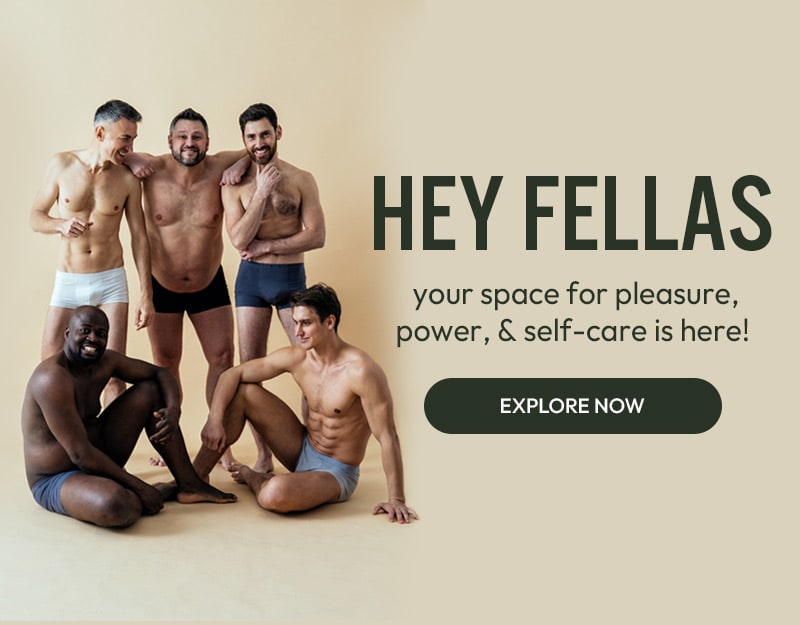What Is Consent?
What is Consent?
Consent is a daily practice, in and out of the bedroom. In fact, outside of the bedroom is where we can get the most practice of using it when communicating with others. In its simplest form is approval, permission, an invitation of expressed desire of something. “Yes, I would love to see a movie with you” for example. We get this by asking “would you like to go see a movie with me?” or being invited first.
Now let’s say you don’t like scary movies, and the person who invited you out didn’t tell you what film they were taking you to see first. This isn’t informed consent, meaning you didn’t fully know all the details before agreeing to it. We want to offer people informed consent because ultimately, we want to ensure our guest are having a good time and feel safe. If that person is not having a good time, they may choose to leave, and that should always be an option.
That’s because consent is always retractable, or reversible. At any point if you decide this is no longer what I want, even after saying yes to it, you get to. Consent is also specific too. Just because you say yes to the movie doesn’t mean you agreed to movie and dinner after or seeing movies together often. It’s something we communicate and agree on together each step of the way.
Consent should always be freely given too. This means trying to convince someone to do something they don’t want to do, such as going to the movies with you or pressuring them to see the film they don’t wanna see affects their ability to hold their boundary honestly without fear of repercussions such as rejection or worse.
That’s why there is a big focus on enthusiastic consent in these conversations. We want folks to be excited at the idea of something we are offering them. If they are not in that moment, leave them some time to sit with on consider the offer without any pressure to take you up on it. This offers folks time and autonomy to decide for themselves what they want and need and that you are a safe person for them to share that with.
Consent should always be communicated clearly, not implied -- and it’s not just for first-time experiences or just new partners. Even if you’ve done this act frequently or it’s someone you've been with for a while, checking in with your partner and getting consent is still essential.
Our friends at Planned Parenthood have arranged all of these principles of consent into a convenient little acronym to make it easy to remember: FRIES.
F- Freely Given: The consent was given without coercion, manipulation, force, threat, or the influence of intoxication. The person consenting gave it voluntarily, of full free will--not because they felt they had to, whether out of fear or feeling something was "expected" of them.
R- Retractable (or reversible): Anyone can change their mind about what they want to do, at any time--even if they previously said yes, even if you've done it before, even if you've already gotten started. Consent can be retracted by the words "no," "stop," or use of a safeword. If the action continues after this, it is no longer consensual.
I- Informed: Everyone is fully aware of what they're giving consent to. This could include--but is not limited to--disclosing STI status, understanding what kind of sex is anticipated, or agreeing to use protection (for example, if someone says they'll use a condom and then doesn't, there is not full consent).
E- Enthusiastic: Simply, everyone involved wants to be doing anything involved. Sex should be about enjoyment: doing things you want to do, rather than because there's an idea of "expectation."
S- Specific: Saying yes to one thing doesn't mean saying yes to everything. For example, if someone says yes to being tied up doesn't mean that they said yes to being tied up and spanked; if someone says they yes to oral sex doesn't mean that they said yes to anal sex. Remember, there should be nothing ever "expected" of someone.
How to I bring up desires or get consent?
Though consent requires communication that is unquestionable, it doesn’t have to feel rigid or uncomfortable. Communicating our desires and boundaries can actually be quite sexy to say and hear!
Can I touch your body here?
Do you want me inside you?
Can we try using a toy together?
It’s also a nice way to check in during the scene to ensure we are creating the most pleasurable experience together! Try working consent into your dirty talk with one another.
Do you like that?
You want more?
Yes, right there!
Harder, please!
Try a Yes / No / Maybe list:
Yes/No/Maybe lists are a simple and fun way to “break the ice” around different interest, desires, and boundaries we may have with those we play with. They give us the opportunity to think critically and on our own without the pressure of seeing our partner’s face asking us in real time. Things put in the Yes colum means these are things we know we are down for, from kissing to sleepovers to safer sex practices. The no are things we know we are not interest in, for whatever reason, which can include anything from certain acts/kinks/names you don’t like being called/ or even “I’m a no for phone calls but a yes to texting due to my busy work schedule.” Maybe is one of the most important categories, as it really gives us the time to think about what the conditions are that make it feel safer. “I’m a maybe to bdsm but only if we’ve both taken a class on it together” or “I might be up for anal but it depends on if I’ve had time to masturbate anally earlier in the day to prepare.” Remember, a maybe is not a yes, it’s a no for now. It's important to not pressure someone’s maybe into a yes.
Also, Yes / No / Maybe lists are great for starting the conversation between partners, but it’s important to note that they are in no way a contract of any kind. Just because someone put it in their "Yes" column doesn't mean that they are always willing to participate in that activity.
Want to print your own here template to try? Check out our starter Yes/No/Maybe list here.














